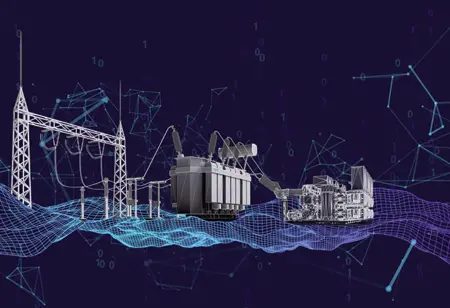Thank you for Subscribing to Electrical Business Review Weekly Brief
I agree We use cookies on this website to enhance your user experience. By clicking any link on this page you are giving your consent for us to set cookies. More info
Energy Storage Technologies Revolutionise Power Supply Stability and Peak Demand Management
In the ever-evolving landscape of energy technology, energy storage solutions have emerged as game-changers in the pursuit of a stable power supply and efficient management of peak demand.

By
Electrical Business Review | Tuesday, October 10, 2023
Stay ahead of the industry with exclusive feature stories on the top companies, expert insights and the latest news delivered straight to your inbox. Subscribe today.
Various technologies, including batteries, flywheels, and pumped hydro storage, are at the forefront of this revolution, promising a greener and more reliable energy future.
FREMONT, CA: In the ever-evolving landscape of energy technology, energy storage solutions have emerged as game-changers in the pursuit of a stable power supply and efficient management of peak demand. Batteries: Empowering Grid Resilience
Batteries have become synonymous with portable power, but they are also transforming the way electricity grids operate. Energy storage systems based on advanced lithium-ion battery technology are increasingly being deployed to store excess energy during periods of low demand and release it during peak hours. This not only stabilises the grid but also helps integrate renewable energy sources, like solar and wind, which are inherently intermittent.
California's 'Sunshine State' Project stands as a shining example of battery storage's impact. This initiative involves the installation of a massive battery storage facility capable of storing excess solar energy generated during the day and releasing it during the evening peak demand period. By doing so, it reduces strain on conventional power plants and reduces reliance on fossil fuels during peak hours.
Flywheels: Spinning Stability
Flywheel energy storage technology is another innovative solution contributing to grid stability. Flywheels are high-speed rotating devices that store kinetic energy. During times of excess energy production, this energy is converted into rotational energy, and during peak demand, the rotational energy is converted back into electricity.
New York City's ConEdison has implemented a pilot program involving flywheel energy storage systems to manage fluctuations in demand and supply. These flywheels, with their rapid response times and minimal environmental impact, are proving effective in maintaining grid frequency and voltage levels. The technology is particularly promising in urban areas where space constraints limit the deployment of traditional energy storage solutions.
Pumped Hydro Storage: Harnessing Gravity
Pumped hydro storage is a well-established technology with a strong track record in grid stability. It involves using excess energy to pump water from a lower reservoir to an upper reservoir. When demand surges, the stored water is released, flowing downhill and passing through turbines to generate electricity.
In the scenic Swiss Alps, the Linth-Limmern Power Stations are a testament to the potential of pumped hydro storage. These power stations use two artificial reservoirs at different altitudes to store energy. When energy demand peaks, water is released from the upper reservoir, generating electricity as it flows downward. This method not only supports power supply but also aids in load balancing and grid stability.
The Road Ahead: Integration and Expansion
As energy storage solutions continue to mature, their integration into global energy systems becomes paramount. Governments, utility companies, and private investors are recognizing the potential of these technologies in transforming the energy landscape. To ensure a sustainable future, research and development efforts are underway to enhance efficiency, reduce costs, and minimise environmental impacts.
In the pursuit of a greener and more resilient energy grid, the spotlight on energy storage technologies shines brighter than ever. Batteries, flywheels, and pumped hydro storage are redefining how we think about power supply stability and peak demand management. Their continued evolution promises a world where reliable, clean energy is readily available, even during the most demanding hours.








